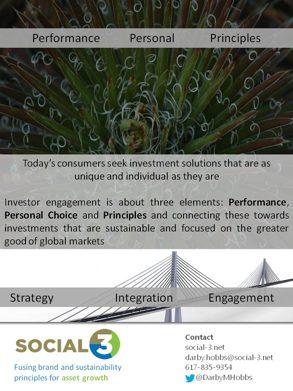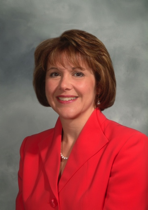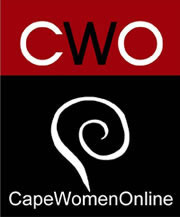CapeWomenOnline - Where Cape Women Shine
Your local venue for the women of Cape Cod to share their ideas, experiences and resources while inspiring each other in their life's journey
Inspire . Encourage . Network . Share
Kernel of Growth: Communities Changing Business Models
by Darby Hobbs, CEO & Founder, SOCIAL3
Planting the seed. Knowing when to sow. Learning how to leverage the strength from within. Understanding the true power of self and self-exploration. Transparency. Being true to one's own drivers for happiness. Success.
But perhaps pushing for success means you bypass some of the growing potential for one self. Striving for happiness is a complex element that only a few actually succeed in unearthing. Why is that?
What are the drivers that influence our thinking of clearing out the clutter to expose our greatest potential, ourselves and our inter-relationship to the larger ecosystem we live within?
As consumers, we consciously or unconsciously lay the foundation for understanding the key drivers for our own value drivers. Our Individual Impact Plan (IIP). What is important to us? What are we passionate about? Who do we want to be surrounded by? What do we want to create? Who do we trust?
In essence, how do we develop our own consumer score for happiness and align ourselves with products, services and organizations that embody what we hold in high value?
We can do this. It's built on discipline. Direction. Faith that we can be true to ourselves and engage with the world through brand choices that support our value drivers.
Companies that perform well, and do so with an eye towards responsible reputational management, corporate citizenship and developing sustainable programs, are the leaders in the long-term and those offerings that would best align with consumers looking to make a difference.
In today's hurried world the blend of social media with traditional forms of communication adds a complex layer of interactivity that heightens our individual awareness of choice. Is there anywhere to go and quietly think? Ponder? We're driven by the need for immediate satisfaction. And immediate truths.
A new form of community has evolved through social media and consumers today are engaged. We live in a mosaic of immediacy and the issue of transparency is no longer debated, it's happening.
Mainstreaming the market voice live by fellow community dwellers, we are all videographers, documentary specialists, capturing daily activities and interactions and posting them to sites like YouTube, we Tweet about them, it's all in a second-by-second explosion throughout each of our days.
But it is becoming the way we live, work and operate. As consumers we are being over communicated to adopt, support, change brand preferences and value drivers for services and products on an immediate basis.
In response to this market momentum, the companies that provide these choices are also caught in this web to relate responsibly and answer not only to the board room, but also to the stakeholders who every day place value on the goods and services created, and in essence drive the capital flow that values these businesses.
In understanding why the Individual Impact Plan (IIP) is so important and where it got its roots we need to look back about thirty years. In 1984, the elements of Technology, Entertainment and Design came together through the entrepreneurial eyes of Richard Saul Wurman, an American architect and graphic designer who changed the way consumers interact by launching the first TED conference.
Through these compelling video venues, viewers and attendees came together in a new way, connected by a thread of interest and inertia that transcended the way we communicate and think of community.
A kindred spirit was lit across generations, genders, professionals, geographic locations and educational backgrounds. Opinion leaders, co-workers, colleagues, next door neighbors and leading dignitaries began to embrace the TED platform as a way to disrupt and challenge what we consumers consciously or unconsciously craft, our Individual Impact Plan (IIP).
Twenty-six million viewers have an interest in why "Schools are Killing Creativity," 14 million people are wondering what would drive a "Stroke of Insight" and close to 9 million consumers want to understand the "Surprising Source of Happiness."
These topics and thousands of others appear in the top viewed TEDTalks.
People want to engage, but they do so on the elements closest to what drives their definition of value. Those are generally the elements of comfort and personal enjoyment which come together to define our personal brand. Topics that deliver answers to knowing oneself better, how to understand humanity and the interconnectedness of it all.
How do we learn to take steps to nurture versus undermine our communities, and what are the elements to motivation?
But what makes this platform so unique as to make an emotionally intelligent leader stand up and take notice? Why are consumers driven to these topics, and to this way of interacting? It's simple. It's to feed, water and grow their seed of happiness.
It's the promise that many of these talks lead to break through ideas, products, services, markets, opportunities, hope and unification. And so as consumers or stakeholders in this global landscape, we are propelled by our own intellectual curiosity to learn and be led down nutritious paths, and while doing so, we need to make sure that the tentacles that reach out driven by our interests are in fact connected to the enlightened brands we choose to satiate our lives.
But today consumers are reaching out for transparency, creativity, engagement and impact, and with this shift, the source of encouragement to find this and a new brand promise is what sparks engagement.
Today, we see tag lines of, "Bring Creativity to Life" (Kickstarter), or "To Connect People through Lending to Alleviate Poverty," (Kiva), or "Raising Money Every Day for What Matters," (Indeigogo).
These platforms are engaging with us on a different level. The movement for immediacy, for making a difference, for taking matters into our own hands, to drive change has not only been supported vis-a-vis social media channels, which has widened the communication gaps that existed prior to these pathways being used and built a new dimension of community, but also has given way to vertical market growth opportunities at the hands of the Millennials.
What do all these firms promise to do? Marry up empowered investors with passion driven projects. Crowd funding. A way to raise money by asking consumers to contribute money, often in small amounts, to a specific business venture or cause. The contributions can be as small as $1 or up to $1M according to the Jumpstart Our Business Startups (JOBS) Act 2012.
The JOBS Act enables startups and small businesses to use SEC-approved crowd funding portals to raise money for their projects. The long-awaited rules, which were a year and a half in the making, lay the ground rules for investment crowd funding, according to Massolution, a market research firm in this space.
"The amount of collective funds raised worldwide via crowd funding platforms has nearly doubled year over year recently; jumping from an estimated $1.5 billion in 2011, to $2.7 billion in 2012, all the way up to $5.1 billion in 2013," according to the Center for Social Innovation (CSI).
In a research report by crowdsourcing.org, titled "Market Trends, Composition and Crowd funding Platforms", there are four categories of crowd funding platforms (CFP) as outlined by Massolution: Equity-based: For financial return, most effective for digital goods, films, music, and literature
Lending-based: For financial return, most effective for digital goods, films, music, and literature
Reward-based: Cause-based programs that appeal to the funders' personal beliefs and passions (e.g., environment, community, faith)
Donation-based: Cause-based programs that appeal to the funders' personal beliefs and passions (e.g., environment, community, faith)
In December, 2012, there were 536 estimated CFPs worldwide with over 1 million successful campaigns run in 2011. The majority of CFPs are located in North America and Europe. Reward-based is the largest category in terms of overall number of CFPs but equity-based is the fastest growing.
And what is developing now and more prevalent in Europe is crowd funding for equity, which enables individuals to invest in an idea and become partial owners of that venture. All with an eye towards implementing ideas that can improve the world.

Today, new brand pathways are being established, built on the ideals of stakeholders that are shifting based on social media communities that are allowing for the conversation to be noticed and addressed.
Premier brands that have always been in a consumer's wheelhouse are noticing this shift and will, over time, drive their agenda to be more in line with these newer brand pathways.
The consumer will continue to drive this agenda and as that happens their own Individual Impact Plan (IIP) will sprout a healthy direction, not only for them as a citizen of this global community, but also the organizations that produce products and services for the new wave of aligning interests and passions to daily life and choices. It's the 3P's: Performance, Personal and Principles.

Darby Hobbs launched SOCIAL3, which fuses brand and sustainability principles through media production and presentation to cultivate ESG (Environmental, Social and Governance), Impact Investing and Corporate Social Responsibility (CSR) story lines and align clients' vision and strategy with market engagement. Collaboration through a holistic lens to communicate the conscience of the financial services industry.
In 2009, Darby became certified in Corporate Social Responsibility (CSR). Prior to that she has been a senior leader at Brown Brothers Harriman, Fidelity Investments, PNC Bank (PFPC), Financial Research Corporation, First Data Corporation and AMEX in marketing strategy, strategic and business planning, product development, public relations, communications and education.
As a motivational speaker and presenter, Darby has participated in leading global platforms to educate and motivate senior managers in CSR/ESG/SRI and Impact Investing as well as brand, innovation, creative thinking and being a visionary. In 1996, Darby launched her first start-up that provided thought leadership, conferences and networking platforms for strategy, marketing and product professionals in the mutual fund industry. She later sold this business to Financial Research Corporation (FRC), a leading research firm in the asset management industry.
Darby has been a mentor for the Boston College Graduate course on Entrepreneurship and Business Planning and serves on a number of philanthropic boards and advisory committees. She is also involved as a judge with Brandeis University for their Bunson Investment Impact Challenge. In addition, she is a member of The Boston Club for Women where she serves on both the strategic planning and corporate board committees and she is a member on the Education Committee of US SIF. In addition, Darby is a member of The Ad Club of Boston and the Financial Communications Society.
Email: darby.hobbs@social-3.net
Website: www.social-3.net
http://www.linkedin.com/company/social3


